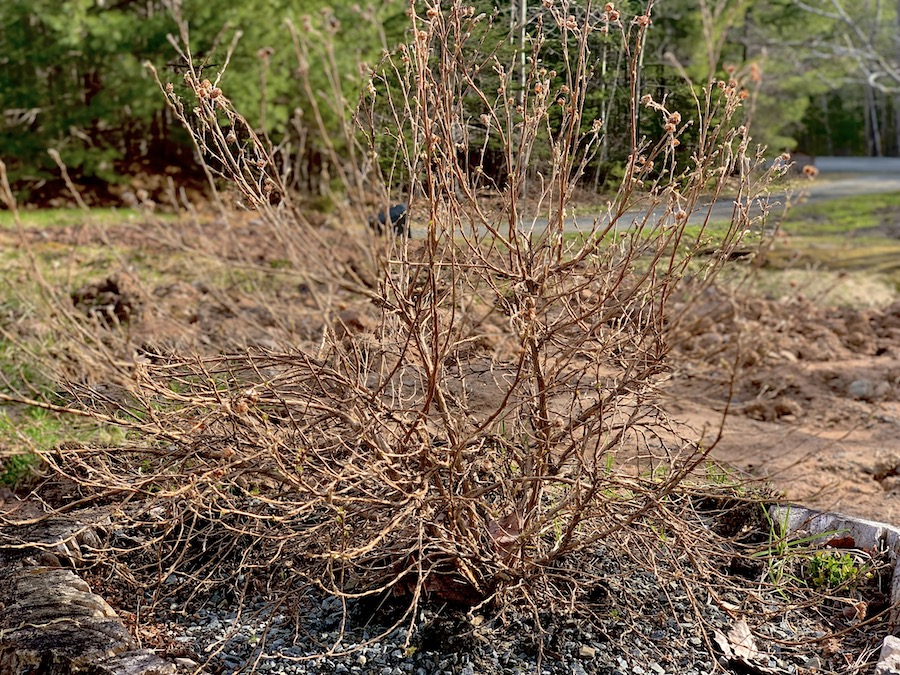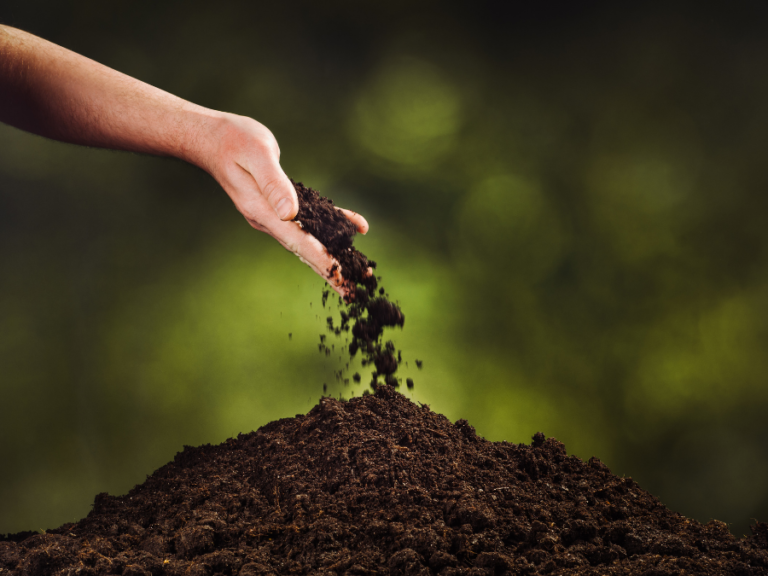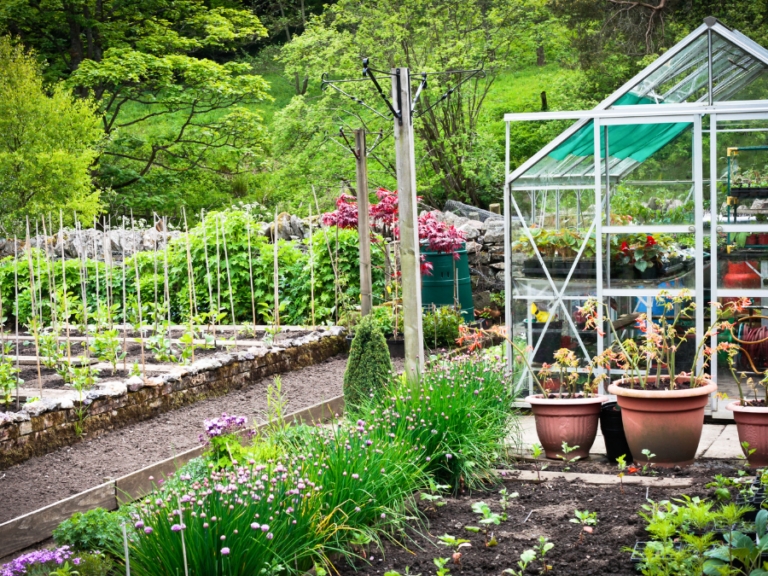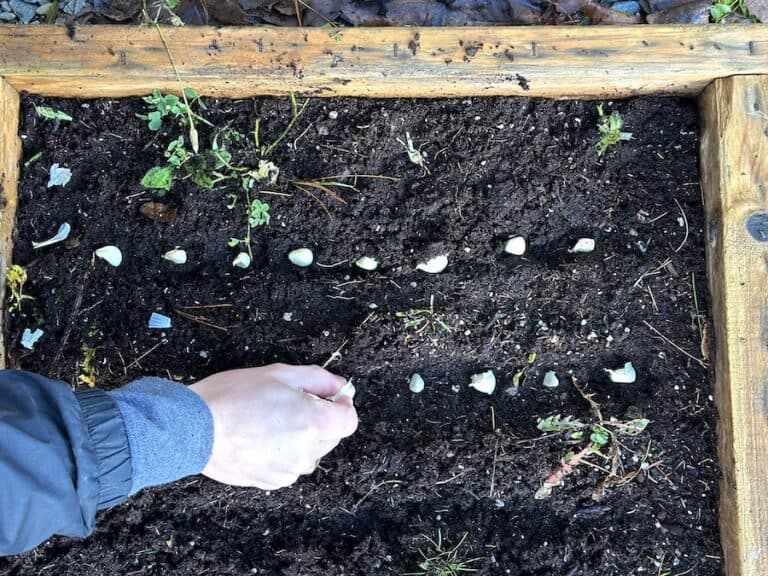What To Do With Dead Garden Plants (11 Practical Ideas)

At the end of a growing season, dead garden plants can pile up quickly, leaving many gardeners wondering what to do with all the organic debris. Instead of tossing them out, why not put them to good use? From composting and mulching to creating wildlife habitats or decorative crafts, there are plenty of ways to recycle and repurpose dead plants. In this article, we’ll share 11 practical and creative ideas to help you manage plant waste while enriching your garden and reducing environmental impact. Let’s turn those dead plants into opportunities for growth!
Disclaimer: This article includes affiliate links. If you click one of them, we may receive a small percentage of the sale at no extra cost to you. Thank you for your support!
Make Sure Your Garden Plants Are Actually Dead
First things first. Before you begin to remove and reuse your dead garden plants, it is important to make sure they are actually dead. Just because your plants have begun to wither or the leaves turn brown does not necessarily mean they are at the point of no return.
It is possible to save a withered plant by trimming down a third of the way from the top or just enough to reach the heartier parts of the stem. Pruning techniques could also revive your plants. However, we recommend researching your plant to see which specific techniques are needed.
Check The Stems & Roots
One way to check if your plants are still alive is to check the stems. This is done by feeling the stems of the plants to test out their strength and composition. If the stems feel mushy or give way to a slight press between the thumb and forefinger, the plant is indeed dead.
To check if your plants are still alive, conduct a stem test. This is where you feel the stems of the plant to test their firmness and composition. They should also have a green cast on the inside. If the stems are mushy inside and give way to a slight press between the thumb and forefinger, the plant is indeed dead.
You can also test the roots of the plant using the same method as previously stated. If the roots are overly mushy to the touch, your plant is most likely unsalvageable.
1. Remove Dead Plants From Garden
One of the easiest things to do with dead plants is to remove them from your garden. Dead plants can put your garden at risk for pest infestations and various plant diseases. If you suspect that your garden plants have died from a disease, then you should remove the dead plants sooner than later.
To remove dead plants from your garden, dig up the infected inert plant(s) from the roots to ensure everything has been completely removed. This includes any diseased flowers, vegetables and fruit plants. In addition, make sure to pick up and compost any large pieces of fruit, vegetables and leaves that have fallen off.
If your plants are dead but not diseased, you should cut them off just above the ground. You will want to keep the roots of the plant undisturbed. Healthy dead plants can help contribute to nutritious soil—especially nitrogen-fixing legumes such as pea plants and beanstalks.
2. Dispose Of Dead Plants In The Trash
Once you remove plants from your garden, they can be placed in the trash if you do not wish to reuse or repurpose them. Note that diseased plants should always be either put in the trash or burned to prevent the further spread of the infection.
To put your dead plants in the trash, you should place them in a clear or black plastic bag (this practice may vary depending on your location) and leave the bag in the sun for a few weeks.
Leaving plants in a bag in the sun will help break them down and may also kill off any living matter or diseases. After this, the bags can be sent to a landfill that will accept waste plants. Ensure that the bag is durable enough to be transported to this location.
3. Turn Dead Plants Into Compost
If your dead garden plants are not diseased, consider turning them into compost to fertilize your garden. To do this, first separate these plants into either Brown (e.g. branches, leaves, stems and twigs) or Green (e.g. fresh-cut grass, fruit and overripe vegetables) material categories.
It is important to note that the amount of Brown and Green materials should be equal and chopped into similar sizes. Then, layer the two alternatively in a bin located in a shady but dry place in your yard. You will want to water this mixture every time you add new materials.
Continue to turn the mixture regularly. After a period of two months to as many as two years, the mixture will be dark and rich. This compost will add carbon, nitrogen, and moisture to your garden. It can be used as a fertilizer to add nutrients to the soil and sustain beneficial bacteria in a garden.
4. Burn Dead Plants (If Permitted)
Burning dead plants is another way to dispose of them, especially if they are diseased. However, not all areas allow for this, and you should research your location’s rules and regulations surrounding plant burning before doing so. It should be noted that this practice is not always recommended. Burning plants can release large amounts of harmful gases into the atmosphere, such as greenhouse gas CO2 (carbon monoxide).
There are two different types of burning practices: closed and open burning. Close burning is a process that is conducted in designated places like furnaces and stoves. Open burning takes place outdoors. This should typically be done on clear days with winds.
Since burning dead plants and materials can be a dangerous practice, the more precautions that are taken, the better. Please consult with your local government and follow their regulations to make sure that burning dead plants is permitted and how to do it properly.
5. Leave The Roots In The Soil
If your plants are dead but otherwise healthy, you may not want to remove them completely from your garden. However, if you choose to keep them, you will want to cut off their stems and allow the roots to remain in the soil.
By leaving the roots in the soil, they will decompose, allowing for earthworms, fungi, nematodes, bacteria, and protozoa to consume the remaining plant material. In addition, the resulting waste contains magnesium, potassium, nitrogen, and phosphorus, which makes for excellent fertile soil.
6. Chop Up Dead Plants
Chopping up dead plants will make them suitable for composting. While they do not need to be the same size, similar-sized pieces are ideal for composting piles. Larger brown materials, such as tree trunks and branches, can be placed into a woodchipper to be chopped up. These woodchips can be used as organic mulch in gardens and landscaping. For example, wood chips can be used to line paths, cover outdoor trails, or even bedding for livestock. Alternatively, they can supplement compost piles as a good source of carbon-rich brown organic material.
7. Use Dead Plants As Mulch
If you have dry leaves, smaller branches, stems, and dried grass, you can use them to make mulch. This is beneficial to your garden as it helps keep away weeds, retain moisture in the soil, help keep plants from drying out, and reduce the impact of frost in the winter.
The easiest way to do this is by gathering any dry leaves and placing them into a pile. Once everything is collected, spread them into a thin, even layer on your lawn and let it dry out. From here, you can use a lawnmower over the material to chop them into small pieces. Once shredded, the mulch is ready to be used.
For other dead plant materials, you can use a mechanical mulcher to chop them into small pieces. You can also add dried grass and pine needles to a mulch mix.
8. Use Dead Plants As Fuel
Different plant materials, such as logs and wood chippings, can be reused in your home as fuel in stoves, fireplaces, furnaces and boilers. Depending on the type of logs or woodchips you are using, they may burn at different rates and temperatures. For example, oak wood can take a long time to ignite and provide a sustained, steady and slow burn in fireplaces. In contrast, pinewood has a shorter ignition time and is better suited as kindling to start fires.
In addition, woodchips made out of oak, maple, mesquite, hickory, apple, and cherry trees can provide smoke and flavour to barbecued meats. These can be used in either smaller homes or industrial-sized smokers.
9. Make Art With Dead Garden Plants
Another way to use dead plants is to get creative and turn them into artwork. Wilted plants, especially flowers, can make for excellent subjects for still-life photography or sketch drawing. Additionally, they can be dried and pressed, making beautiful statement pieces in a home once framed.
Another way to reuse dead plants is by collecting and pasting them onto a piece of construction paper. This is a great activity for children and parents to do together.
10. Dig A Composting Trench
Digging a composting tench is a common practice called trench composting. This is done by using Green and Brown compost materials (ideally your garden’s dead plants, as well as foodstuff waste such as apple cores, banana peels, nutshells, and eggshells). These materials are placed in a dug trench.
This trench (or hole) should be placed away from any active gardens. The dead plant matter and food waste should be mixed evenly and then placed inside. After this, the mixture is to be covered with soil.
The trench should be watered enough so as not to dry out completely. This helps the decomposition process, which can take at least 12 months. Once the materials have been composted, plants and vegetables can be planted along the former trench.
11. Exchange Dead Plants At Local Farmers’ Market
While this may not be an option for everyone, some areas have local farmers’ markets that will take dead plants (as long as they are disease-free) to turn them into compost for farms. If your area does not have a local farmers’ market, consider reaching out to other farmers in the area and see






